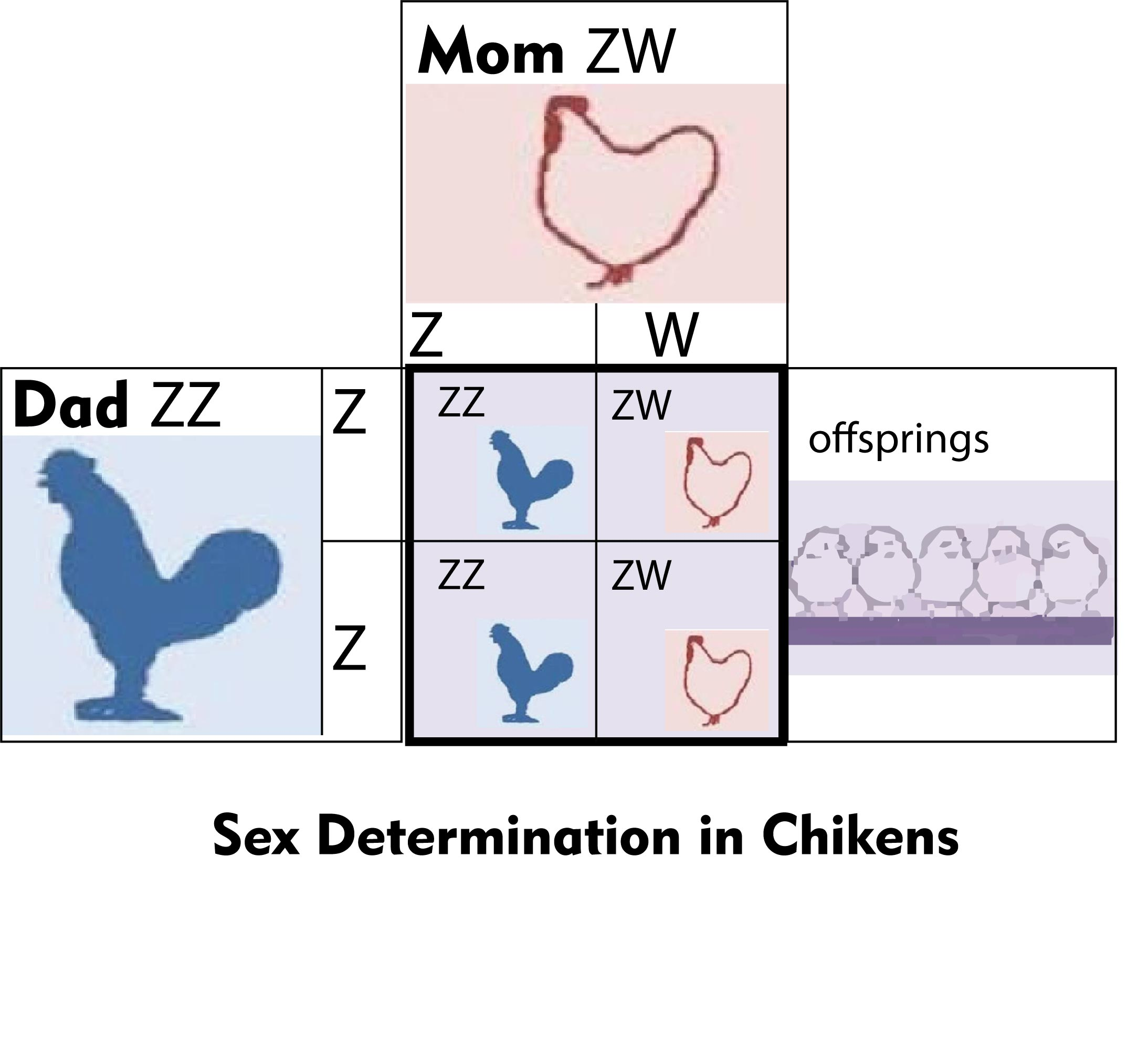Answer
397.2k+ views
Hint A group of warm-blooded vertebrates characterized by feathers, toothless beaked jaws, four-chambered hearts, and egg-laying are the species that have a homogametic male. They have wings whose growth varies by species.
Complete answer:
The ZW type of sex-determination system is a chromosomal process that determines the sex of offspring in birds, some fish, and crustaceans. Examples are the giant river prawn, some insects (including butterflies and moths), and some reptiles, including Komodo dragons. To separate this system from the XY sex-determination system, the letters Z and W are used. Women have a pair of dissimilar ZW chromosomes in this scheme, and males have two identical ZZ chromosomes.
Females are the heterogametic sex (ZW) and males the homogametic (ZZ) in certain species, such as birds.
Sex determination in birds is of the forms ZW and ZZ in which females (AA and ZW) are heteromorphic and males (AA and ZZ) have homomorphic sex chromosomes. Male birds create a single form of gametes and are homogametic due to the presence of a single type of sex chromosome (ZZ).
Additional information:
The term homogametic refers to the sex of a species in which the sex chromosomes are the same. For example, the female is the homogametic sex in humans (and most other mammals) females have two identical homologous chromosomes (XX), whereas males, the heterogametic sex, have two homologous chromosomes with separate genes (XY) of different sizes.

So, the correct answer is, ‘Birds’.
Note: There are distinct forms of strategies for sex determination. One of them is, as in humans, the XX-XY type of determination. The ZZ-ZW form of sex determination is another. In birds, it is used. Birds are a group of Aves-class warm-blooded vertebrates characterized by feathers, toothless beaked jaws, hard-shelled egg-laying, a high metabolic rate, a four-chambered heart, and a powerful but light skeleton.
Complete answer:
The ZW type of sex-determination system is a chromosomal process that determines the sex of offspring in birds, some fish, and crustaceans. Examples are the giant river prawn, some insects (including butterflies and moths), and some reptiles, including Komodo dragons. To separate this system from the XY sex-determination system, the letters Z and W are used. Women have a pair of dissimilar ZW chromosomes in this scheme, and males have two identical ZZ chromosomes.
Females are the heterogametic sex (ZW) and males the homogametic (ZZ) in certain species, such as birds.
Sex determination in birds is of the forms ZW and ZZ in which females (AA and ZW) are heteromorphic and males (AA and ZZ) have homomorphic sex chromosomes. Male birds create a single form of gametes and are homogametic due to the presence of a single type of sex chromosome (ZZ).
Additional information:
The term homogametic refers to the sex of a species in which the sex chromosomes are the same. For example, the female is the homogametic sex in humans (and most other mammals) females have two identical homologous chromosomes (XX), whereas males, the heterogametic sex, have two homologous chromosomes with separate genes (XY) of different sizes.

So, the correct answer is, ‘Birds’.
Note: There are distinct forms of strategies for sex determination. One of them is, as in humans, the XX-XY type of determination. The ZZ-ZW form of sex determination is another. In birds, it is used. Birds are a group of Aves-class warm-blooded vertebrates characterized by feathers, toothless beaked jaws, hard-shelled egg-laying, a high metabolic rate, a four-chambered heart, and a powerful but light skeleton.
Recently Updated Pages
How many sigma and pi bonds are present in HCequiv class 11 chemistry CBSE

Why Are Noble Gases NonReactive class 11 chemistry CBSE

Let X and Y be the sets of all positive divisors of class 11 maths CBSE

Let x and y be 2 real numbers which satisfy the equations class 11 maths CBSE

Let x 4log 2sqrt 9k 1 + 7 and y dfrac132log 2sqrt5 class 11 maths CBSE

Let x22ax+b20 and x22bx+a20 be two equations Then the class 11 maths CBSE

Trending doubts
Fill the blanks with the suitable prepositions 1 The class 9 english CBSE

At which age domestication of animals started A Neolithic class 11 social science CBSE

Which are the Top 10 Largest Countries of the World?

Give 10 examples for herbs , shrubs , climbers , creepers

Difference between Prokaryotic cell and Eukaryotic class 11 biology CBSE

Difference Between Plant Cell and Animal Cell

Write a letter to the principal requesting him to grant class 10 english CBSE

Change the following sentences into negative and interrogative class 10 english CBSE

Fill in the blanks A 1 lakh ten thousand B 1 million class 9 maths CBSE



